KETCHANच्या इंडक्शन हार्डनिंग मशीनचा वापर उत्पादन उद्योगात स्टील किंवा मिश्र धातुच्या भागांच्या कठोर उत्पादन प्रक्रियेत केला जातो.
- शाफ्ट: ऑप्टिकल शाफ्ट, कॅमशाफ्ट, क्रँकशाफ्ट, रोलर टेबल, गियर शाफ्ट, ड्राइव्ह शाफ्ट, ट्रान्समिशन शाफ्ट, ब्रेक शाफ्ट, रोटर्स, वर्म्स, व्हॉल्व्ह, पिन शाफ्ट, स्टेप्ड शाफ्ट, मशीन टूल टॉप, कपलिंग, स्प्लाइन शाफ्ट, मोटर शाफ्ट
- Gears: स्पर गीअर्स, हेलिकल गीअर्स, स्प्रॉकेट्स, रॅक, गीअर्स, अंतर्गत गीअर्स, बाह्य गीअर्स, ड्राईव्ह गीअर्स, बेअरिंग्ज, बेअरिंग स्लीव्हज, टेपर स्लीव्ह कनेक्शन प्लेट्स
- चाके: फ्लायव्हील, गाइड व्हील, लिफ्टिंग व्हील, ट्रेन व्हील, सॉ ब्लेड
- सरळ रेषा: मार्गदर्शक रेल, ब्लेड, फाइल्स, सॉ ब्लेड्स, स्टील बेल्ट्स, काँक्रीट वितरण पाईप्स,
- इतर श्रेणी: शिफ्ट फॉर्क्स, मशीन टूल चक्स, युनिव्हर्सल जॉइंट्स, बॉल स्टड्स, वर्कपीस एंड फेस, वर्कपीस ग्रूव्हज, जबडा
आम्ही वरील मेटल वर्कपीससाठी मॅन्युअल, सेमी-ऑटोमॅटिक आणि ऑटोमॅटिक इंडक्शन हार्डनिंग सिस्टीम, तसेच क्वेंचिंग, टेम्परिंग आणि अॅनिलिंगसह इंटिग्रेटेड टर्नकी इंडक्शन हार्डनिंग सोल्यूशन्स प्रदान करतो.
आम्ही प्रोफेशनल इंडक्शन हार्डनिंग उपकरणे प्रदान करण्यासाठी समर्पित निर्माता आहोत जे उत्पादन कार्यक्षमता आणि स्टील पृष्ठभाग शमन करण्याची उत्पादन प्रक्रिया सुधारू शकतात. 1900 वर्षांहून अधिक काळ जगभरातील 20 हून अधिक ग्राहकांना (एजंट आणि अंतिम वापरकर्त्यांसह) सेवा देत आहे.
विक्रीसाठी इंडक्शन हार्डनिंग मशीन
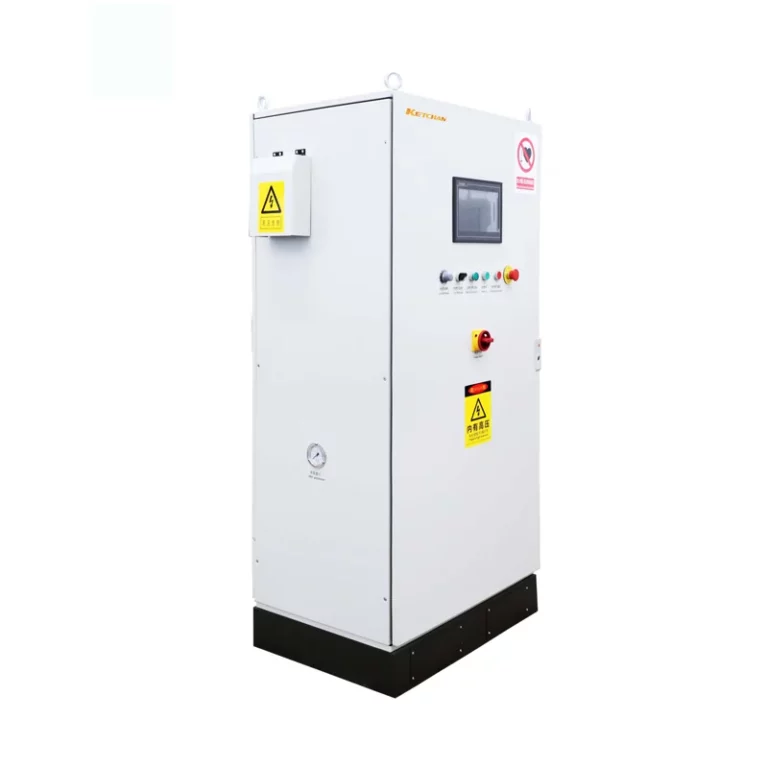
उच्च वारंवारता इंडक्शन हार्डनिंग मशीन
1 IGBT high frequency induction hardening machine
2 Wide frequency range fast heating speed
3 Temperature and time can be well controlled
4 परिपूर्ण
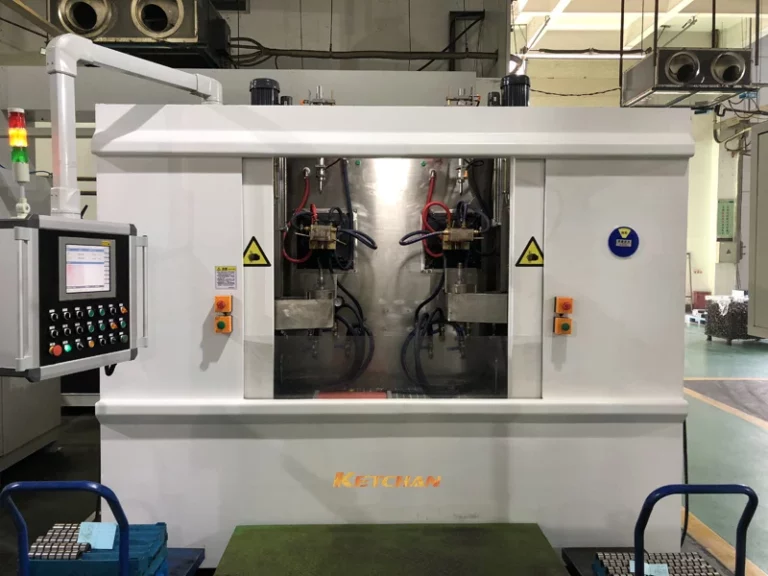
शाफ्ट इंडक्शन हार्डनिंग मशीन
1 Automated shaft induction hardening machine
2 Fast heating speed Less oxidation
3 Heating length speed temperature can control
4 Uniform hardening speed high

बॉल स्टड इंडक्शन हार्डनिंग मशीन
1 Ball stud ball socket induction hardening machine
2 Customized 1 2 4 8 stations CNC hardening machine
3 Digital DSP induction heating power supply <br

सीएनसी इंडक्शन हार्डनिंग मशीन
1 Turnkey CNC induction hardening machine
2 CNC program with Siemens Mitsubishi Fanuc
3 Imported ball screw servo motor drives
4 Customize 1 10
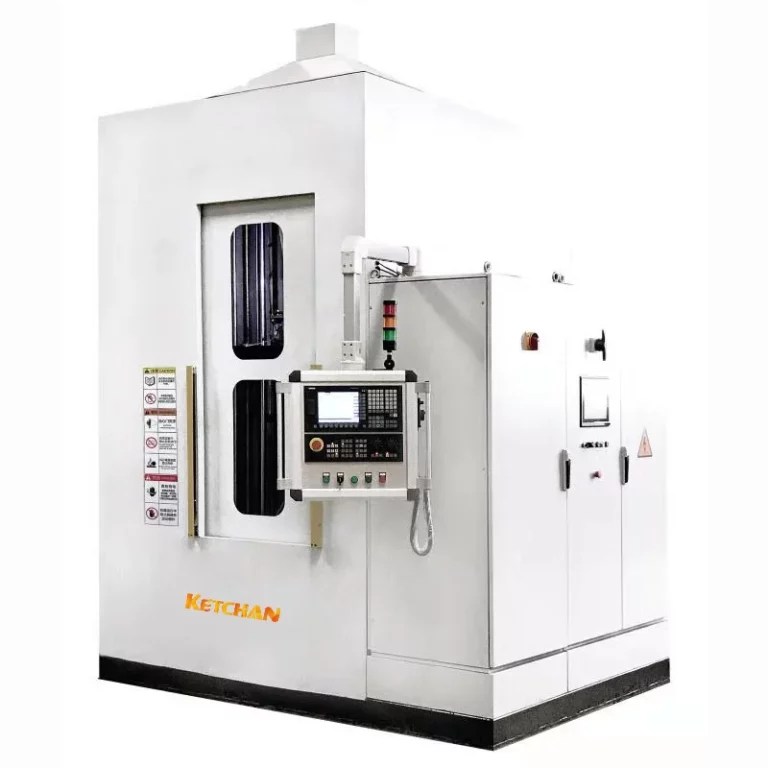
अनुलंब सीएनसी हार्डनिंग मशीन टूल
1 Vertical CNC hardening machine tool
2 Adopt Siemens CNC control system
3 High automation for mass production
4 Adopt hardening integrated design <br
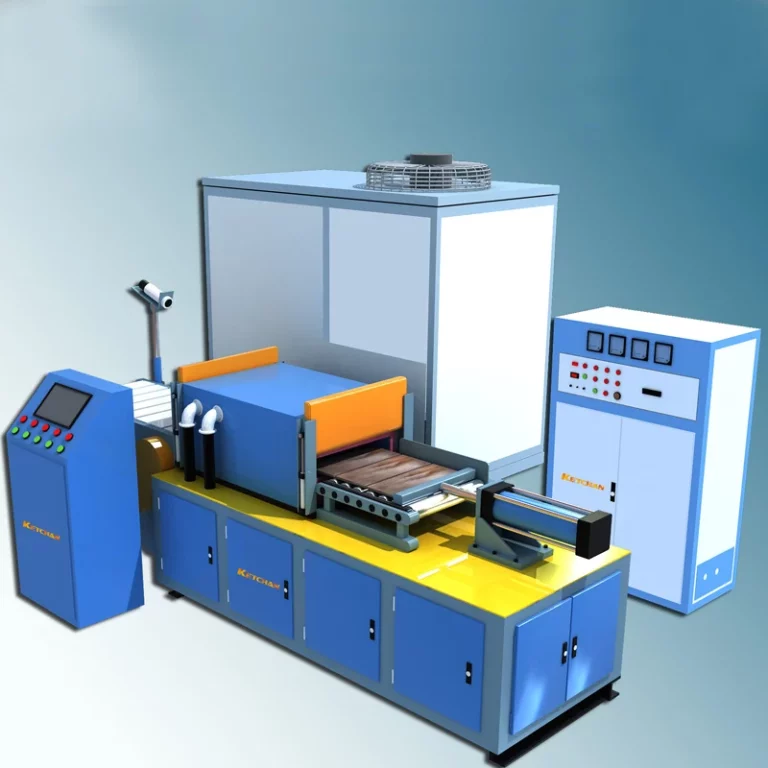
क्षैतिज हार्डनिंग मशीन टूल
1 Automated horizontal hardening machine tool
2 Suitable for all kinds of shafts hardening cases
3 Complete induction hardening tempering process
4 With multi
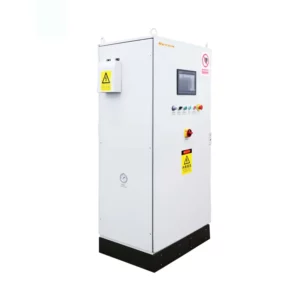
उच्च वारंवारता इंडक्शन हार्डनिंग मशीन
1. IGBT उच्च वारंवारता इंडक्शन हार्डनिंग मशीन.
2. विस्तृत वारंवारता श्रेणी, जलद गरम गती.
3. तापमान आणि वेळ चांगल्या प्रकारे नियंत्रित करता येते.
4. परिपूर्ण स्व-संरक्षण अलार्म कार्ये.
5. एकसमान कठोर परिणाम.
6. भिन्न इंडक्शन हार्डनिंग कॉइल्स सानुकूलित करा.
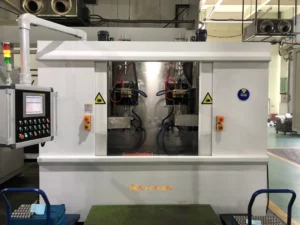
शाफ्ट इंडक्शन हार्डनिंग मशीन
1. स्वयंचलित शाफ्ट इंडक्शन हार्डनिंग मशीन.
2. जलद गरम गती, कमी ऑक्सीकरण.
3. हीटिंग लांबी, गती, तापमान नियंत्रित करू शकता.
4. एकसमान कडक होणे गती, उच्च नियंत्रण अचूकता.
5. भिन्न इंडक्शन कॉइल्स सानुकूलित करा.
6. अधिक ऊर्जा-बचत, अधिक हरित वातावरण.

बॉल स्टड इंडक्शन हार्डनिंग मशीन
1. बॉल स्टड, बॉल सॉकेट इंडक्शन हार्डनिंग मशीन.
2. सानुकूलित 1/2/4/8 स्टेशन्स सीएनसी हार्डनिंग मशीन.
3. डिजिटल डीएसपी इंडक्शन हीटिंग पॉवर सप्लाय.
4. खास सानुकूलित इंडक्शन हार्डनिंग कॉइल.
5. पेटंट इंडक्शन हार्डनिंग ट्रान्सफॉर्मरसह जुळवा.
6. बॉल पिन इंडक्शन हार्डनिंग टर्नकी प्रोजेक्ट पूर्ण करा.

सीएनसी इंडक्शन हार्डनिंग मशीन
1. टर्नकी सीएनसी इंडक्शन हार्डनिंग मशीन.
2. सीमेन्स/मित्सुबिशी/फॅनुक सह CNC कार्यक्रम.
3. आयातित बॉल स्क्रू, सर्वो मोटर ड्राइव्ह.
4. 1-10 कार्यरत स्टेशन्स सानुकूलित करा.
5. मॅच प्रोसेस पॅरामीटर मॉनिटरिंग सिस्टम.
6. आम्ही CE, SGS सह थेट पुरवठादार आहोत.
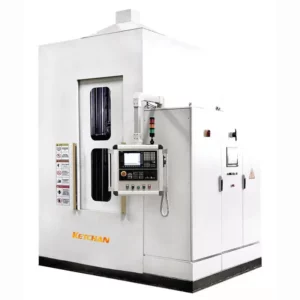
अनुलंब सीएनसी हार्डनिंग मशीन टूल
1. अनुलंब सीएनसी हार्डनिंग मशीन टूल.
2. सीमेन्स सीएनसी नियंत्रण प्रणालीचा अवलंब करा.
3. मोठ्या प्रमाणावर उत्पादनासाठी उच्च ऑटोमेशन.
4. हार्डनिंग इंटिग्रेटेड डिझाइनचा अवलंब करा.
5. वेगवेगळ्या कडक करण्याच्या पद्धती लक्षात घ्या.
6. 1-10 कार्यरत स्टेशन्स सानुकूलित करा.
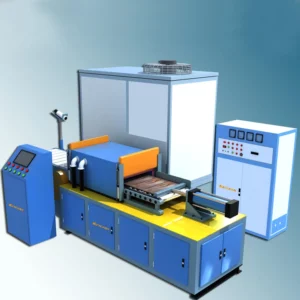
क्षैतिज हार्डनिंग मशीन टूल
1. स्वयंचलित क्षैतिज हार्डनिंग मशीन टूल.
2. सर्व प्रकारच्या शाफ्ट हार्डनिंग केसेससाठी योग्य.
3. इंडक्शन हार्डनिंग टेम्परिंग प्रक्रिया पूर्ण करा.
4. बहु-भाषा प्रसिद्ध सीएनसी प्रणालीसह.
5. मोफत प्रेरण उष्णता उपचार प्रक्रिया प्रदान करा.
6. परदेशातील सेवेचे समर्थन, 24 तास कार्यरत.
मोफत तांत्रिक सल्ला. अनुभवी अभियांत्रिकी संघ तुमच्यासाठी तयार आहे!
मशीन वैशिष्ट्ये
- इंडक्शन हीटिंग पॉवर सप्लाय आणि हार्डनिंग मशीन टूलचे एकात्मिक डिझाइन. लहान फूटप्रिंट आणि साधे पाइपिंग.
- पार्ट्स उचलणे आणि ट्रान्सफॉर्मरची पुढे आणि मागे हालचाल सर्वो मोटर्सद्वारे चालविली जाते, बॉल स्क्रूद्वारे चालविली जाते आणि हलणारी स्थिती 0.1 मिमी पर्यंत अचूकपणे नियंत्रित केली जाते.
- सीएनसी सिस्टम कंट्रोल, कीबोर्ड इनपुट, क्वेंचिंग प्रोग्रामचे स्टोरेज, कार्यरत प्रोग्रामचे स्वयंचलित नियंत्रण.
- प्रोग्राम करण्यायोग्य प्रक्रिया समायोजित करणे सोपे आहे, ऑपरेट करणे सोपे आहे आणि परिपूर्ण संरक्षण आणि अलार्म कार्ये आहेत. सिस्टम भाषा स्विच केली जाऊ शकते.
पर्यायी उपकरणे
- मध्यम वारंवारता इंडक्शन हीटिंग पॉवर सप्लाय, उच्च वारंवारता किंवा अल्ट्रा-हाय फ्रिक्वेंसी इंडक्शन हीटिंग पॉवर सप्लाय.
- सानुकूलित इंडक्शन हार्डनिंग कॉइल्स
- शमन स्प्रे रिंग
- सिंगल स्टेशन, डबल-स्टेशन किंवा डिस्क मल्टी-स्टेशन टूलिंग
- शमन आणि इंडक्शन हीटिंग पॉवर सप्लायसाठी वॉटर कूलिंग सिस्टम
- कन्व्हेइंग डिव्हाइस, क्लॅम्पिंग मेकॅनिकल आर्म, वायवीय क्लॅम्पिंग डिव्हाइस.
- इन्फ्रारेड तापमान नियंत्रण प्रणाली
- इंडक्शन हीटिंग कंडिशन मॉनिटरिंग सिस्टम रिअल-टाइममध्ये इंडक्शन हीट ट्रीटमेंट प्रक्रिया पॅरामीटर्स प्रदर्शित, रेकॉर्ड आणि संग्रहित करू शकते.
इंडक्शन हार्डनिंग मशीन्स ऍप्लिकेशन्स
- स्टील किंवा इतर मिश्रधातूंच्या भागांची ताकद आणि सेवा आयुष्य वाढवण्यासाठी त्यांना कडक करणे आणि टेम्परिंग करणे. उदाहरणार्थ, इंडक्शन हार्डनिंगचा वापर सर्जिकल ब्लेड, सीट बेल्टचे भाग, सॉ ब्लेड, फिटिंग्ज, स्क्रू, गीअर्स, कॅम असेंब्ली, आर्मेचर शाफ्ट, पुली, चाकू ब्लेड इत्यादी कठोर करण्यासाठी केला जाऊ शकतो.
- यांत्रिक पार्ट्स आणि ऑटोमोबाईल पार्ट्सची पृष्ठभाग किंवा निवडलेल्या प्रदेशांना कडक करणे, त्यांची पोशाख प्रतिरोध आणि कार्यक्षमता सुधारणे. उदाहरणार्थ, इंडक्शन हार्डनिंगचा वापर पॉवरट्रेन घटक, सस्पेंशन घटक, इंजिन घटक, स्टॅम्पिंग, सीव्हीजे क्वेंचिंग पार्ट्स, व्हॉल्व्ह पार्ट्स, हब बेअरिंग पार्ट्स, इलेक्ट्रिक वाहनांचे मोटर रोटर्स इत्यादी कठोर करण्यासाठी केला जाऊ शकतो.
- एकसमान कडकपणा आणि गुणवत्ता प्राप्त करण्यासाठी जटिल आकार किंवा भूमितीसह धातूच्या भागांच्या पृष्ठभागावर किंवा निवडलेल्या प्रदेशांना कठोर करणे. उदाहरणार्थ, मोटरसायकल गीअर्स, स्क्रू थ्रेड्स, मार्किंग स्टॅम्प इत्यादी कडक करण्यासाठी इंडक्शन हार्डनिंगचा वापर केला जाऊ शकतो.

रेलचे इंडक्शन हार्डनिंग
धातूचा प्रकार, इच्छित कडकपणा आणि उपलब्ध उपकरणे यावर अवलंबून, मेटल ट्रॅकची पृष्ठभाग कडक करण्याच्या विविध पद्धती आहेत. काही सामान्य पद्धती
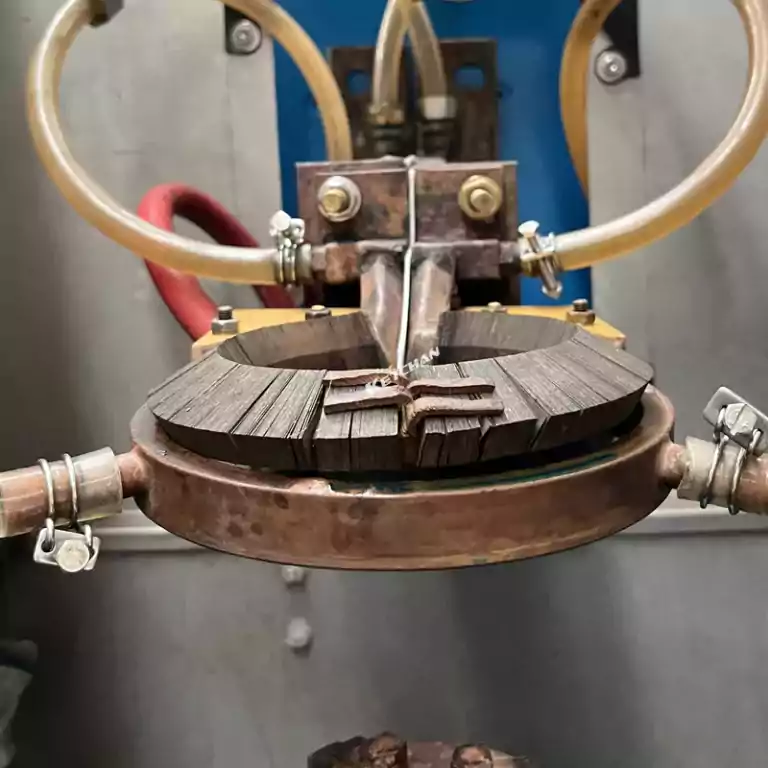
अर्थमूव्हिंग मशीन बुशचे इंडक्शन हार्डनिंग
अर्थमूव्हिंग मशीन बुशचे इंडक्शन हार्डनिंग ही एक प्रक्रिया आहे जी पृथ्वी-हलवणाऱ्या उपकरणांमध्ये वापरल्या जाणार्या स्टीलच्या भागांची कडकपणा आणि टिकाऊपणा वाढवण्यासाठी प्रेरित उष्णता आणि जलद शीतकरण वापरते.
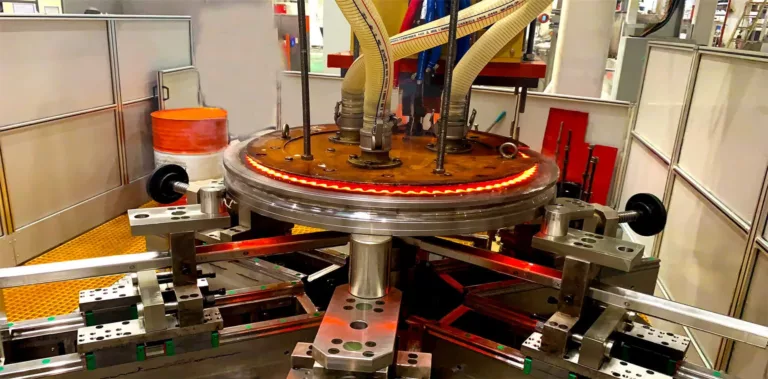
इंडक्शन हार्डनिंग प्रक्रिया मार्गदर्शन
KETCHANच्या इंडक्शन हीटिंग मशीन फ्रिक्वेन्सी रेंज: 1 kHz-600 kHz मशीनची किंमत मिळवा इंडक्शन हार्डनिंग हा पृष्ठभागाच्या कडकपणाचा एक प्रकार आहे ज्यामध्ये धातूचा भाग आलटून पालटून गरम केला जातो.
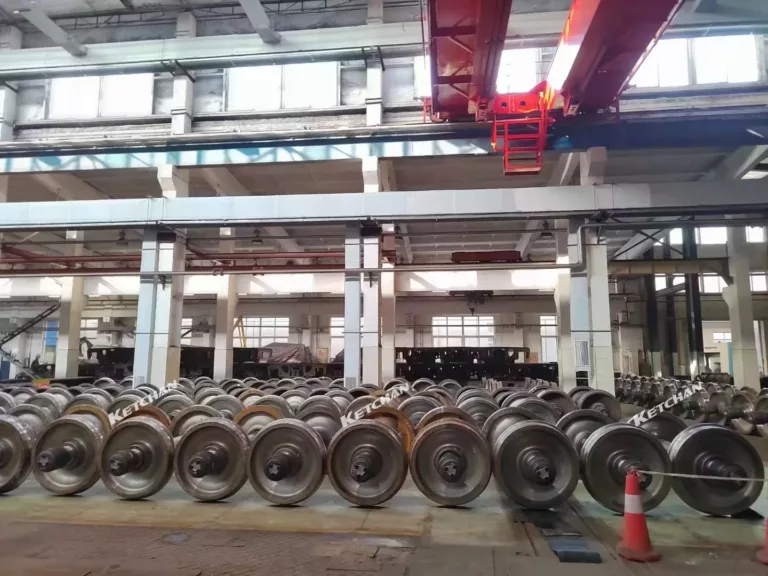
चाकांचे इंडक्शन हार्डनिंग
चाकांचे इंडक्शन हार्डनिंग ही गीअर चाकांच्या पृष्ठभागाला गरम करण्याची आणि शमवण्याची प्रक्रिया आहे ज्यामुळे त्यांचा कडकपणा आणि पोशाख प्रतिरोध वाढतो. इंडक्शन हीटिंगमध्ये इलेक्ट्रोमॅग्नेटिक फील्डचा वापर होतो
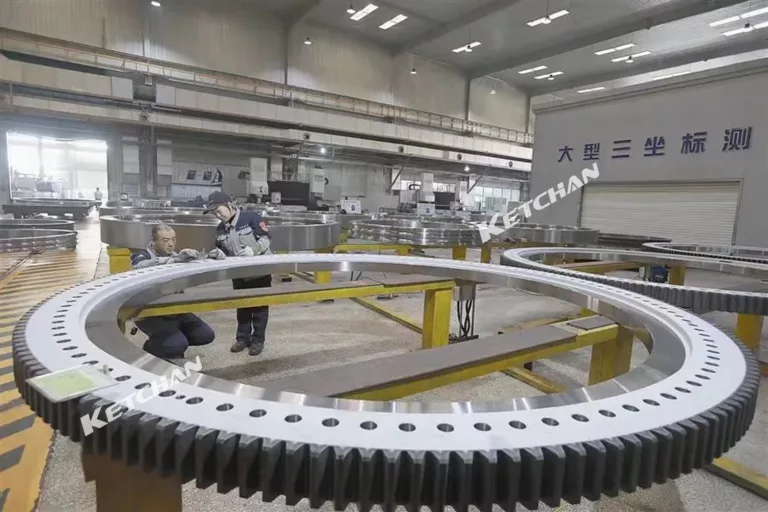
विंड पॉवर जनरेटर बेअरिंग इंडक्शन हार्डनिंग
पवन उर्जा जनरेटर बेअरिंगसाठी सीएनसी हार्डनिंग मशीन टूल पवन उर्जा जनरेटरमधील मोठे बेअरिंग हे पवन टर्बाइनच्या डिझाइनमधील प्रमुख घटक आहेत. च्या कडक गुणवत्ता

इलेक्ट्रिक वाहन इंडक्शन हीटिंग आणि हार्डनिंग आणि ब्रेझिंग
इलेक्ट्रिक वाहने आणि इंडक्शन हीटिंग गेल्या काही वर्षांत, लोकांची इलेक्ट्रिक वाहनांची मागणी लक्षणीय वाढली आहे आणि इलेक्ट्रिक वाहने हा एक नवीन ट्रॅक बनला आहे ज्याचा पाठपुरावा प्रमुख
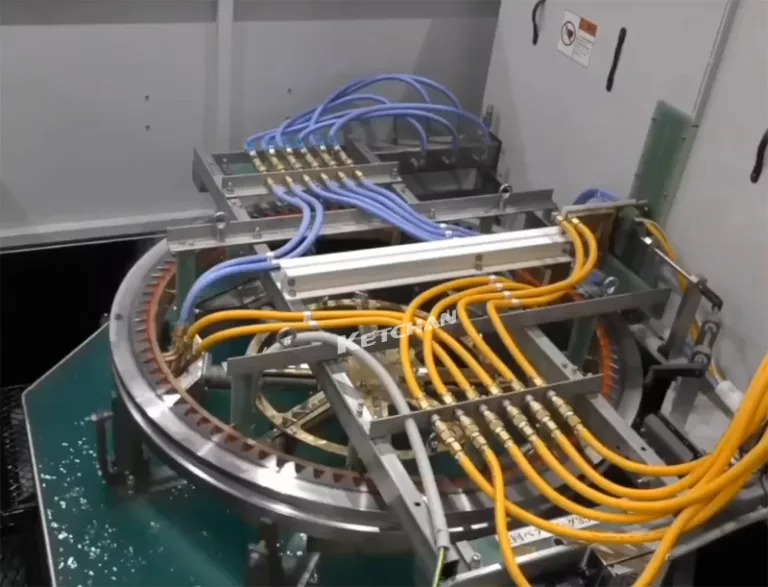
गीअर्सचे ड्युअल फ्रिक्वेन्सी इंडक्शन हार्डनिंग
ड्युअल-फ्रिक्वेंसी इंडक्शन हीटिंग परंपरागत (पारंपारिक) ड्युअल-फ्रिक्वेंसी इंडक्शन हार्डनिंगचे तत्त्व असे आहे की दोन फ्रिक्वेन्सी पॉवर सप्लाय अनुक्रमे दोन इंडक्टर्सना लागू केले जातात आणि गीअर प्रीहीट करणे आवश्यक आहे.
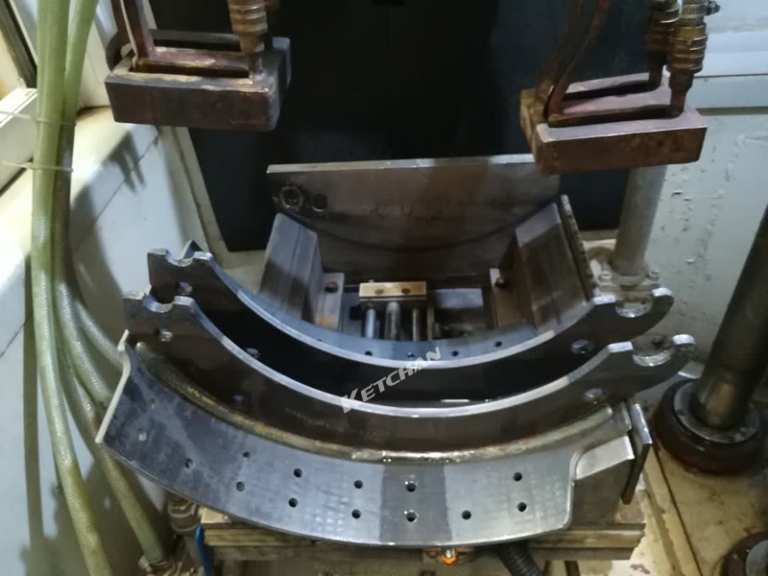
इंडक्शन हार्डनिंग ऑटोमोबाईल घटक
https://www.youtube.com/watch?v=w3wKmfnNGs8 Parts can reflect the extent of induction hardening of an average car. Induction hardening of constant-speed links (sleeves and cylinders for front-drive sedans), axles and rear axle drive
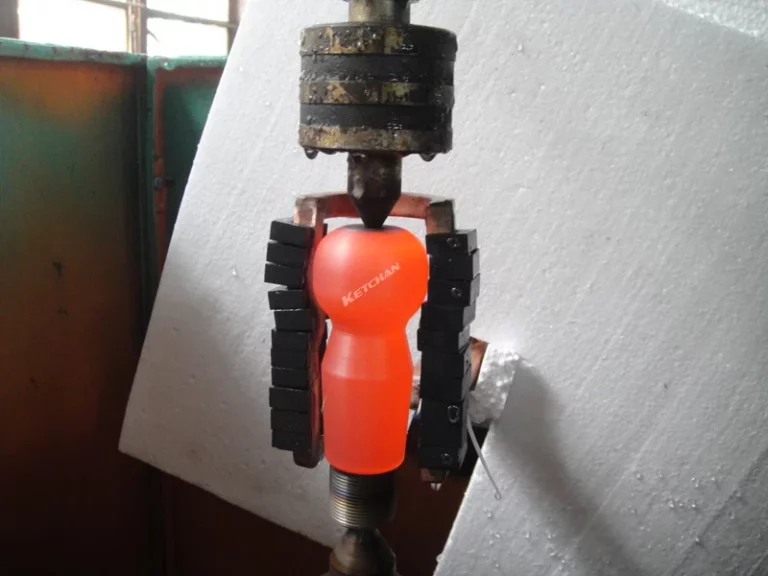
बॉल स्टड आणि बॉल सॉकेट इंडक्शन हार्डनिंग मशीन
बॉल स्टडचे मुख्य कार्य म्हणजे चाकाची वर आणि खाली हालचाल आणि स्टीयरिंगची हालचाल लक्षात घेणे. बॉल स्टड ही एक महत्त्वाची सुरक्षा आहे
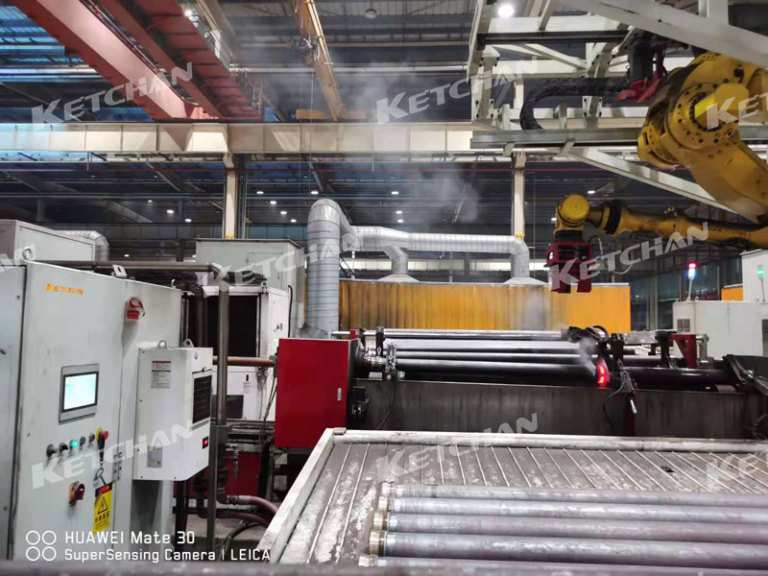
काँक्रीट पंप ट्यूब आतील पृष्ठभाग हार्डनिंग मशीन
1. डिजिटल काँक्रीट पंप पाईप आतील पृष्ठभाग इंडक्शन हार्डनिंग.
2. सानुकूलित ट्यूब इनर होल इंडक्शन हार्डनिंग सिस्टम.
3. इंडक्शन हीटिंग हार्डनिंग पाईपची लांबी 3.5 मीटर पर्यंत.
4. जलद गरम गती, ऊर्जा-बचत भरपूर.
5. हा टर्नकी पाईप इंडक्शन हार्डनिंग प्रोजेक्ट आहे.
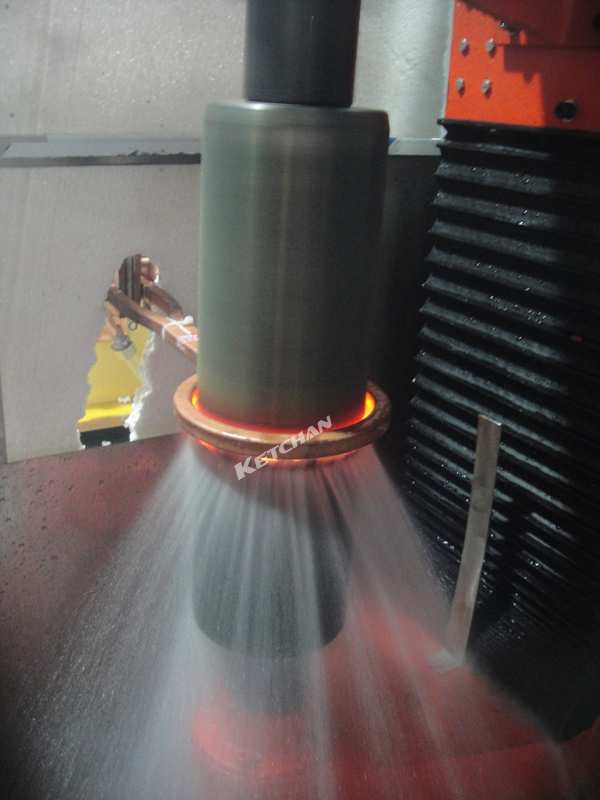
शाफ्टचे इंडक्शन हार्डनिंग
ऍप्लिकेशन्स: टॉर्शन आणि बेंडिंग सारख्या पर्यायी भारांच्या अधीन असलेल्या वर्कपीसमध्ये, पृष्ठभागाच्या थराला कोरपेक्षा जास्त ताण किंवा पोशाख प्रतिकार सहन करणे आवश्यक आहे आणि
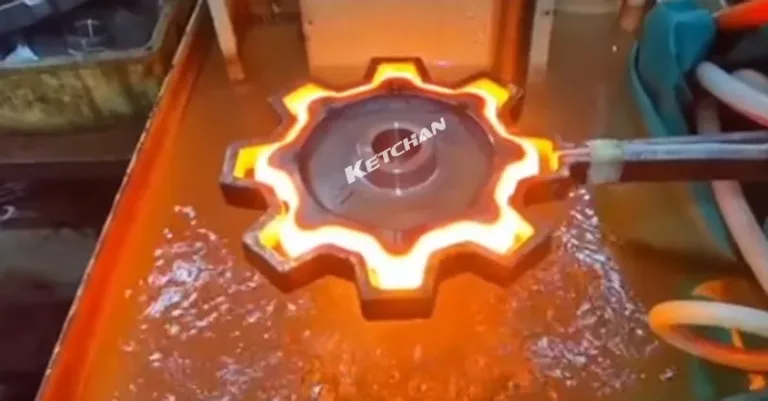
इंडक्शन हार्डनिंग उपकरणे
इंडक्शन हार्डनिंग इक्विपमेंट ही एक हीटिंग सिस्टम आहे ज्याचा वापर पृष्ठभाग कडक करण्यासाठी आणि इंडक्शन हीटिंगच्या तत्त्वाचा वापर करून यांत्रिक भाग कडक करण्यासाठी केला जातो. इंडक्शन हीटिंगमुळे उष्णता लागू होऊ शकते
इंडस्ट्रीज
इंडक्शन हार्डनिंग मशीन ही अशी उपकरणे आहेत जी धातूच्या भागांची पृष्ठभाग गरम करण्यासाठी आणि कडक करण्यासाठी इलेक्ट्रोमॅग्नेटिक इंडक्शनच्या तत्त्वाचा वापर करतात. घटकांचा पोशाख प्रतिरोध आणि टिकाऊपणा सुधारण्यासाठी ते ऑटोमोटिव्ह, मशीन आणि टूल मॅन्युफॅक्चरिंगसारख्या विविध उद्योगांमध्ये मोठ्या प्रमाणावर वापरले जातात. इंडक्शन हार्डनिंग मशीन वर्कपीसच्या आकार, आकार आणि सामग्रीवर अवलंबून, शमन आणि टेम्परिंग, स्टॅटिक हार्डनिंग किंवा स्कॅन हार्डनिंग यासारख्या कठोर प्रक्रियांचे विविध प्रकार करू शकतात. इंडक्शन हार्डनिंग मशिनचे हार्डनिंगच्या इतर पद्धतींपेक्षा बरेच फायदे आहेत, जसे की जलद गरम करणे, अचूक नियंत्रण, किमान विकृती, पृष्ठभागावरील डिकार्ब्युरायझेशन नाही आणि सूक्ष्म-धान्य मायक्रोस्ट्रक्चर.
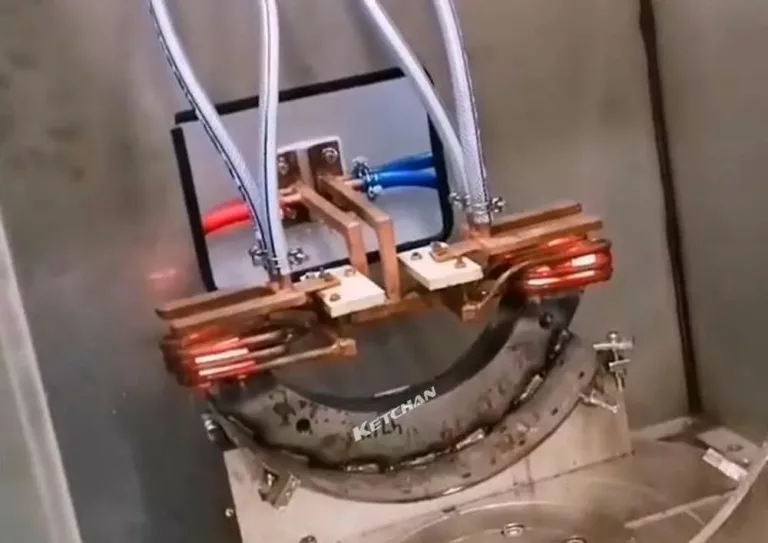
ऑटो पार्ट्ससाठी इंडक्शन हीटिंग सोल्यूशन्स
इंडक्शन हीट ट्रीटमेंटचे फायदे आणि तोटे ऑटो पार्ट्स इंडक्शन हीट ट्रीटमेंट ही एक प्रक्रिया आहे जी इलेक्ट्रोमॅग्नेटिक फील्डचा वापर करून धातूचे भाग किंवा घटक थेट संपर्काशिवाय गरम करते. हे आहे
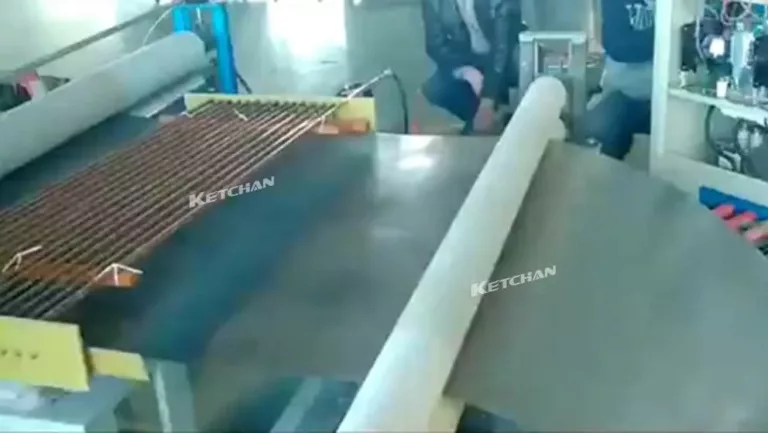
संमिश्र सामग्रीचे इंडक्शन हीटिंग
इंडक्शन हीटिंग हे एक तंत्रज्ञान आहे जे फेरोमॅग्नेटिक आणि प्रवाहकीय सामग्री गरम करण्यासाठी वैकल्पिक इलेक्ट्रोमॅग्नेटिक फील्ड वापरते आणि भूतकाळात पॉलिमरिक सामग्री आणि कंपोझिटशी जुळवून घेतले गेले आहे.
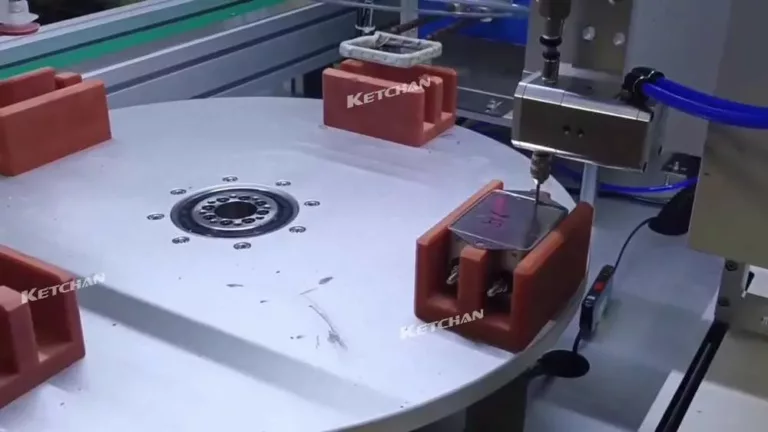
इंडक्शन हीटिंग तंत्रज्ञान 5G उद्योगासाठी काय करू शकते?
इंडक्शन हीटिंग टेक्नॉलॉजी 5G इंडस्ट्रीसाठी 5G घटक आणि उपकरणांची निर्मिती, चाचणी आणि दुरुस्तीच्या दृष्टीने फायदे देऊ शकते. जसे की: 5G घटकांचे उत्पादन आणि

इलेक्ट्रिक वाहन इंडक्शन हीटिंग आणि हार्डनिंग आणि ब्रेझिंग
इलेक्ट्रिक वाहने आणि इंडक्शन हीटिंग गेल्या काही वर्षांत, लोकांची इलेक्ट्रिक वाहनांची मागणी लक्षणीय वाढली आहे आणि इलेक्ट्रिक वाहने हा एक नवीन ट्रॅक बनला आहे ज्याचा पाठपुरावा प्रमुख
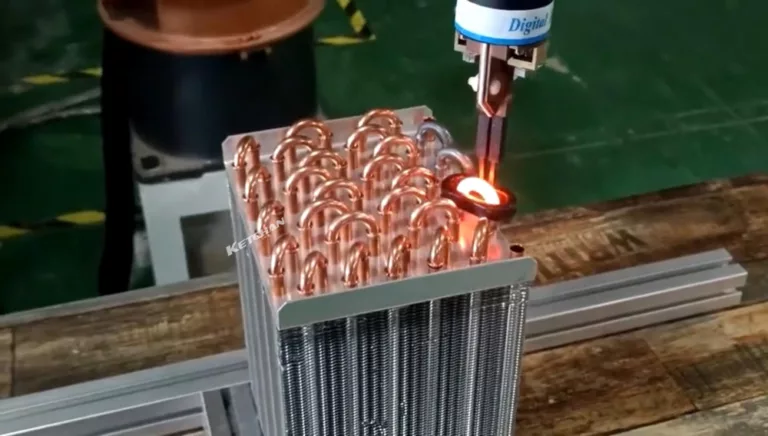
इंडक्शन सोल्डरिंग प्रिसिजन सोल्यूशन्स
इंडक्शन सोल्डरिंग म्हणजे काय? इंडक्शन सोल्डरिंग फिलरसह जोडण्यासाठी दोन किंवा अधिक विद्युत वाहक सामग्री गरम करण्यासाठी अचूक इलेक्ट्रोमॅग्नेटिक फील्ड वापरून कार्य करते.
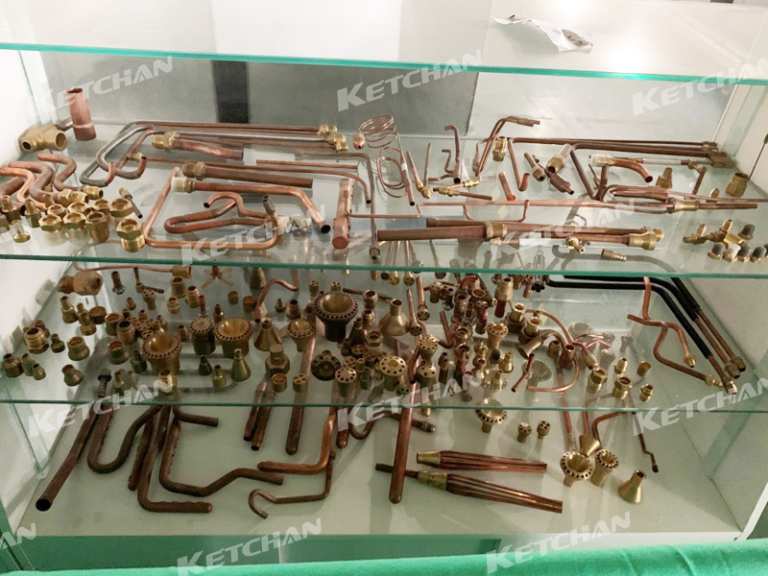
HVAC उद्योगासाठी इंडक्शन ब्रेझिंग सोल्यूशन्स
एअर कंडिशनिंग ऍक्सेसरीजची रचना एअर कंडिशनिंग ऍक्सेसरीजमध्ये सर्किट कंट्रोल बोर्ड, वायर कंट्रोलर्स, मॅनिफोल्ड्स, रेफ्रिजरंट्स, इलेक्ट्रॉनिक एक्सपेन्शन व्हॉल्व्ह, मोटर्स, कंप्रेसर, लिक्विड मिरर आणि बॉल व्हॉल्व्ह यांचा समावेश होतो. उच्च-फ्रिक्वेंसी इंडक्शन ब्रेजिंग तंत्रज्ञान
FAQ
कोणत्या धातूचे प्रेरण कठोर केले जाऊ शकते?
स्टील, कास्ट आयर्न, स्टेनलेस स्टील, अॅल्युमिनियम, तांबे, पितळ आणि टायटॅनियम यासारख्या विविध धातूंवर इंडक्शन हार्डनिंग लागू केले जाऊ शकते. तथापि, सर्व धातू एकाच शमन माध्यमाने किंवा पद्धतीने शमवता येत नाहीत. शमन माध्यमाची निवड धातूचा प्रकार, रचना आणि आकार तसेच इच्छित कडकपणा आणि सूक्ष्म संरचना यावर अवलंबून असते. काही सामान्य शमन माध्यम म्हणजे पाणी, तेल, हवा, पॉलिमर द्रावण किंवा निष्क्रिय वायू.
हार्डनिंग प्रक्रियेसाठी इंडक्शन हीटिंग पॉवर सप्लायची वारंवारता कशी निवडावी?
हार्डनिंग वर्कपीससाठी इंडक्शन हीटिंग पॉवर सप्लायची वारंवारता हे एक महत्त्वाचे पॅरामीटर आहे जे इंडक्शन हार्डनिंग प्रक्रियेची गरम खोली, कार्यक्षमता आणि गुणवत्ता प्रभावित करते. वारंवारता निवड अनेक घटकांवर अवलंबून असते, जसे की वर्कपीसचा आकार, आकार, सामग्री आणि कडकपणाची आवश्यकता, इंडक्शन कॉइलचा प्रकार आणि डिझाइन, हीटिंग सायकलची शक्ती आणि वेळ आणि उपकरणांची किंमत आणि उपलब्धता. .
सर्वसाधारणपणे, वारंवारता जितकी जास्त असेल तितकी गरम खोली कमी असेल आणि उलट. म्हणून, वर्कपीससाठी ज्यांना उथळ कडक होणे आवश्यक आहे, जसे की पातळ किंवा लहान भाग, उच्च-वारंवारता वीज पुरवठ्याला प्राधान्य दिले जाते. वर्कपीससाठी ज्यांना खोल कडकपणा आवश्यक आहे, जसे की जाड किंवा मोठे भाग, कमी-फ्रिक्वेंसी किंवा मध्यम-फ्रिक्वेंसी वीज पुरवठा अधिक योग्य आहेत. तथापि, इतर घटकांचा देखील विचार करणे आवश्यक आहे, जसे की त्वचेचा प्रभाव, एडी वर्तमान वितरण, चुंबकीय पारगम्यता आणि वर्कपीस सामग्रीची विद्युत प्रतिरोधकता. हे घटक इंडक्शन करंटच्या प्रवेशाची खोली आणि हीटिंग एकसमानतेवर परिणाम करतात.
वारंवारता निवड देखील इंडक्शन कॉइलच्या प्रकारावर आणि डिझाइनवर अवलंबून असते. कॉइल हा इंडक्शन हार्डनिंग सिस्टमचा एक महत्त्वाचा घटक आहे, कारण ते चुंबकीय क्षेत्राचा आकार आणि वितरण निर्धारित करते जे वर्कपीसमध्ये विद्युत् प्रवाह आणते. इष्टतम कार्यक्षमता आणि कार्यप्रदर्शन प्राप्त करण्यासाठी कॉइल वीज पुरवठ्याची वारंवारता आणि शक्ती यांच्याशी जुळली पाहिजे. एकसमान गरम आणि कडक होणे सुनिश्चित करण्यासाठी वर्कपीसच्या समोच्च फिट करण्यासाठी कॉइलचा आकार देखील असावा. गीअर्स किंवा शाफ्ट सारख्या जटिल भूमितींसाठी, अचूक कठोर नमुने साध्य करण्यासाठी विशेष कॉइलची आवश्यकता असू शकते.
वारंवारता निवडीसाठी हीटिंग सायकलची शक्ती आणि वेळ हे देखील महत्त्वाचे घटक आहेत. शक्ती आणि वेळ वर्कपीसला वितरित केलेल्या उष्णतेचे प्रमाण निर्धारित करतात आणि कडकपणाची खोली आणि गुणवत्ता प्रभावित करतात. इच्छित ऑस्टेनिटायझेशन तापमान आणि शमन दर प्राप्त करण्यासाठी वर्कपीसची वारंवारता आणि सामग्रीनुसार शक्ती आणि वेळ समायोजित केले जावे. सामान्यतः, उच्च फ्रिक्वेन्सीला उच्च शक्ती आणि कमी वेळा आवश्यक असतात, तर कमी फ्रिक्वेन्सीला कमी शक्ती आणि जास्त वेळ आवश्यक असते. तथापि, खूप जास्त पॉवर किंवा खूप कमी वेळेमुळे वर्कपीस पृष्ठभाग जास्त तापू शकतो किंवा क्रॅक होऊ शकतो, तर खूप कमी पॉवर किंवा खूप वेळ अपुरा कडक होणे किंवा जास्त विकृती होऊ शकते.
वारंवारता निवडीसाठी उपकरणांची किंमत आणि उपलब्धता हे देखील व्यावहारिक विचार आहेत. वेगवेगळ्या फ्रिक्वेन्सींना वेगवेगळ्या प्रकारच्या पॉवर सप्लाय आणि कॉइल्सची आवश्यकता असते, ज्याची किंमत आणि उपलब्धता वेगवेगळी असू शकते. उच्च फ्रिक्वेन्सीसाठी सामान्यतः कमी फ्रिक्वेन्सीपेक्षा अधिक महाग आणि अत्याधुनिक उपकरणे आवश्यक असतात. म्हणून, वारंवारता निवड वापरकर्त्याचे बजेट आणि संसाधने देखील विचारात घेतली पाहिजे.
सारांश, इंडक्शन हार्डनिंग वर्कपीससाठी कोणतीही एकल इष्टतम वारंवारता नाही. वारंवारता निवड इंडक्शन हार्डनिंग प्रक्रियेवर परिणाम करणारे विविध घटक आणि निकषांच्या तपशीलवार विश्लेषणावर आधारित असावी. वारंवारता निवडीसाठी काही सामान्य मार्गदर्शक तत्त्वे आहेत:
- उथळ कडक होण्यासाठी (1 मिमी पेक्षा कमी), उच्च-फ्रिक्वेंसी वीज पुरवठा (50 kHz वरील) वापरा.
- मध्यम कडक होण्यासाठी (1-3 मिमी), मध्यम-फ्रिक्वेंसी वीज पुरवठा (10-50 kHz) वापरा.
- खोल कडक करण्यासाठी (3 मिमी पेक्षा जास्त), कमी-फ्रिक्वेंसी वीज पुरवठा (10 kHz खाली) वापरा.
- जटिल भूमिती किंवा अचूक नमुन्यांसाठी, विशेष कॉइल वापरा किंवा हार्डनिंग तंत्र स्कॅन करा.
- उच्च उत्पादन दर किंवा गुणवत्तेसाठी, उच्च शक्ती आणि कमी वेळ वापरा.
- कमी किमतीसाठी किंवा उपलब्धतेसाठी, कमी उर्जा आणि जास्त वेळ वापरा.
योग्य इंडक्शन हार्डनिंग मशीन कशी निवडावी?
योग्य इंडक्शन हार्डनिंग मशीन निवडणे अनेक घटकांवर अवलंबून असते, जसे की वर्कपीसचा प्रकार, आकार, आकार आणि सामग्री, इच्छित कडकपणा नमुना आणि खोली, उत्पादन दर आणि गुणवत्ता आणि उपकरणाचे बजेट आणि उपलब्धता. तुमच्या अर्जासाठी योग्य इंडक्शन हार्डनिंग मशीन निवडण्यात मदत करण्यासाठी येथे काही सामान्य मार्गदर्शक तत्त्वे आहेत:
- इंडक्शन हार्डनिंग पद्धत निश्चित करा: वर्कपीसची भूमिती आणि आकार यावर अवलंबून, तुम्ही वेगवेगळ्या इंडक्शन हार्डनिंग पद्धतींमधून निवडू शकता, जसे की स्पिन हार्डनिंग, टूथ-बाय-टूथ हार्डनिंग, गॅप-बाय-गॅप हार्डनिंग किंवा टीप-बाय-टिप. कडक होणे स्पिन हार्डनिंग लहान किंवा मध्यम आकाराच्या गीअर्ससाठी योग्य आहे ज्यांना इंडक्शन कॉइलने वेढले जाऊ शकते आणि उच्च वेगाने फिरवले जाऊ शकते. दात-दर-दात कडक होणे हे मोठ्या किंवा गुंतागुंतीच्या गीअर्ससाठी योग्य आहे ज्यांना प्रत्येक दातासाठी गरम आणि शमन चक्राचे अचूक नियंत्रण आवश्यक आहे. गॅप-बाय-गॅप हार्डनिंग हे दात-दर-दात कडक होण्याचे एक प्रकार आहे जे एका वेळी दोन दातांमधील अंतर गरम करते आणि शांत करते. टीप-बाय-टिप हार्डनिंग हे दात-दर-दात कडक होण्याचा आणखी एक प्रकार आहे जो प्रत्येक दाताच्या फक्त टोकाला गरम करतो आणि शांत करतो.
- इंडक्शन हीटिंग पॉवर सप्लाय निवडा: इंडक्शन हीटिंग पॉवर सप्लाय हे असे उपकरण आहे जे इंडक्शन कॉइलमधून वाहणारे पर्यायी प्रवाह निर्माण करते आणि वर्कपीस गरम करणारे इलेक्ट्रोमॅग्नेटिक फील्ड तयार करते. वीज पुरवठा इंडक्शन कॉइल आणि वर्कपीसची वारंवारता, पॉवर, व्होल्टेज आणि वर्तमान आवश्यकतांशी जुळला पाहिजे. वारंवारता निवड ही हीटिंगची खोली आणि एकसमानता, सामग्रीचे गुणधर्म आणि वर्कपीसच्या कॉइल डिझाइनवर अवलंबून असते. सामान्यतः, उच्च फ्रिक्वेन्सी उथळ गरम खोली निर्माण करतात आणि कमी फ्रिक्वेन्सी अधिक खोल गरम खोली निर्माण करतात. उर्जा निवड ही हीटिंग वेळ आणि तापमान, सामग्रीचे गुणधर्म आणि वर्कपीसच्या कॉइल डिझाइनवर अवलंबून असते. सामान्यतः, उच्च शक्ती जलद गरम दर आणि उच्च तापमान निर्माण करतात.
- इंडक्शन कॉइल निवडा: इंडक्शन कॉइल हा एक घटक आहे जो वर्कपीसला वेढतो किंवा त्याच्याशी संपर्क साधतो आणि इलेक्ट्रोमॅग्नेटिक ऊर्जा त्यामध्ये हस्तांतरित करतो. कॉइलची रचना वर्कपीसच्या आकार आणि आकारात बसण्यासाठी आणि त्याभोवती एकसमान चुंबकीय क्षेत्र तयार करण्यासाठी केली पाहिजे. ओव्हरहाटिंग आणि नुकसान टाळण्यासाठी कॉइल देखील वॉटर-कूल केलेले असावे. कॉइल डिझाइन इंडक्शन हार्डनिंग प्रक्रियेची कार्यक्षमता आणि कार्यप्रदर्शन प्रभावित करते.
- शमन माध्यम निवडा: शमन माध्यम हा पदार्थ आहे जो गरम झालेल्या वर्कपीसला थंड करतो आणि त्याच्या पृष्ठभागावर कठोर मार्टेन्सिटिक रचना तयार करतो. शमन माध्यम वर्कपीसचा प्रकार, रचना आणि आकार तसेच इच्छित कडकपणा आणि मायक्रोस्ट्रक्चरनुसार निवडले पाहिजे. काही सामान्य शमन माध्यम म्हणजे पाणी, तेल, हवा, पॉलिमर द्रावण किंवा निष्क्रिय वायू. प्रत्येक शमन करण्याच्या माध्यममध्ये वर्कपीसवर कूलिंग रेट आणि प्रभाव वेगवेगळे असतात.
- इतर पर्यायी उपकरणे विचारात घ्या: तुमच्या विशिष्ट अनुप्रयोग आणि गरजांनुसार, तुम्ही तुमच्या इंडक्शन हार्डनिंग मशीनमध्ये काही पर्यायी उपकरणे जोडण्याचा विचार करू शकता, जसे की कस्टम इंडक्शन कॉइल्स, फूट स्विच, कस्टम लवचिक केबल्स, कूलिंग वॉटर सिस्टम, स्वयंचलित लोडिंग आणि अनलोडिंग सिस्टम, कन्वेयर सिस्टम, किंवा पीएलसी रिमोट कंट्रोल सिस्टम. ही पर्यायी उपकरणे तुमची उत्पादन कार्यक्षमता, गुणवत्ता, सुविधा किंवा सुरक्षितता वाढवू शकतात.
